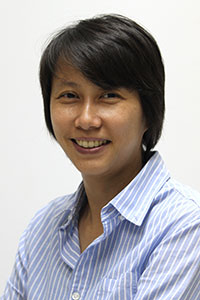At the same time when thousands of shoppers and netizens lamented the closure of 28-year-old Isetan Department Store, Bangkok lost one of its oldest food shops in Bang Rak district, known for its authentic khao mok gai (Thai chicken biryani) and oxtail soup.
The restaurant, situated in an old shophouse not far away from Assumption College, had been in business for more than six decades. The closure was forced by so-called "gentrification". When Bang Rak, especially Charoen Krung, was resurrected and turned into a new attraction for visitors from outside the neighbourhood, the rent went up so much so that the shop owner decided to leave, and the shop, Raan Muslim, became a memory. The irony.
Charoen Krung is one of the oldest parts of the city and is the first road that was built when Bangkok expanded to this side of the city. It was the bygone CBD where Chinese and Muslim merchants coexisted, with diverse commercial shops. As land prices in the city have skyrocketed in the past few decades, small shops have been replaced with chic cafes and restaurants, malls and high-rise condos.
The same development pattern is seen in Ari and Phra Khanong, where small businesses have gradually disappeared and rows of shophouses were bulldozed over to pave the way for condos and community malls. Klong San will soon experience such changes as the lease contract of a huge land plot, the home to Klong San Plaza, expires next year. The landlord, the State Railway of Thailand, is likely to look for big developers for the once-sleepy area.
I know we can't really stop or even slow down urban development and I shouldn't complain because the country is driven by capitalism. Most importantly, development is determined by demand and supply, and the closure has nothing to do with the pandemic. But isn't it about time for us to look at the fact that Bangkok hasn't really been developed for locals to live in?
To me, government and city policymakers care more about maximising land use, without considering how the residents will really live in it. With such development policies, large parts of Bangkok have been gentrified by the private sector, with tacit or open consent from the state.
With such development patterns, the owner of the Muslim restaurant, no doubt, had to pack up after serving local residents and students in the neighbourhood as well as tourists for six decades. The owner did not want to raise food prices as local residents would find it too expensive.
Public space reclamation by the Bangkok Metropolitan Administration (BMA) is another example of short-sighted vision. The city administrators reclaim public space from street food vendors, without seeing the real function and making it a tourist attraction. Look at Khao San, where the BMA takes pride in its food street, and which became empty in the pandemic era when international travel was blocked.
I also don't mind having chic cafes and restaurants, and boutique hostels in my neighbourhood. But I do mind having a whole row of shophouses turned into cafes and restaurants, drawing people from far away and attracting tourists, eliminating space for non-touristic small businesses, like wet markets, which are necessary for local residents.
A few blocks within a 1-kilometre-radius in my neighbourhood, owned by the Property Management of Chulalongkorn University, are filled with dozens of restaurants and cafes, open from early morning till late night, as well as a few round-the-clock convenience stores.
Many may think residents in my neighbourhood are lucky that we have wide choices to fill our culinary desires, eating out at different venues without returning to the old places for at least two weeks. But there's more to life than just eating out or having coffee.
I remember how my neighbourhood was so diverse. We used to have all sorts of small businesses by local operators, from small shops selling simple yet tasty noodles to mom-and-pop shops, from stationery shops to hardware stores. There were dress-making shops as well as banks and a couple of clinics. If we needed something fancy, we could just go to department stores located a few bus stops away. Otherwise, we could remain, living our life in the neighbourhood.
But now choices are scarce. When I need something, I have to walk either to a convenience store or a shopping mall. No more familiar traders in the neighbourhood. With such development patterns, we may have to go all the way to Khao San Road or Chinatown for street food, since the ones operated by locals have a tough time trading, or even face bans.
Is this the right direction? I am not sure. But I miss the old times when we could fulfil our needs in daily life without going to a shopping mall. Life seemed perfect back then.
